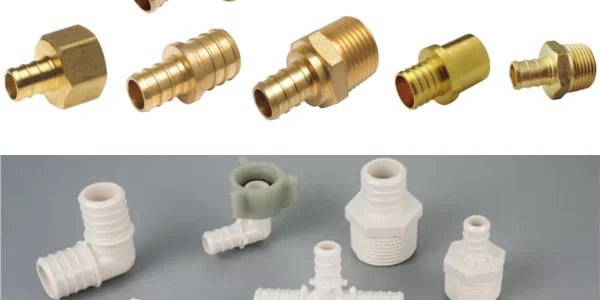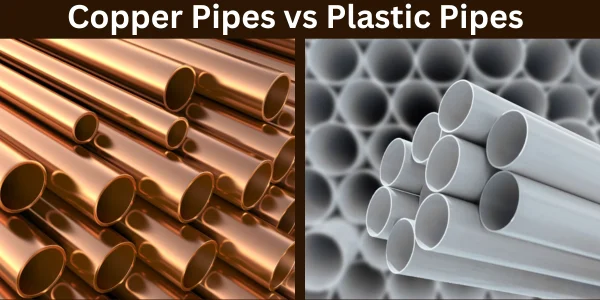When it comes to installing a septic system, one of the most important decisions homeowners face is choosing between a concrete or plastic septic tank. Both options have their unique strengths and weaknesses, making it crucial to understand their differences to make the right choice for your property.
In this detailed comparison, we’ll break down the pros, cons, durability, installation process, cost, and maintenance needs of concrete and plastic septic tanks to help you decide which option best suits your home.
What Are Concrete and Plastic Septic Tanks?
Concrete Septic Tanks
Concrete septic tanks are made from reinforced concrete and are known for their strength and durability. They are commonly used in both residential and commercial properties due to their long lifespan and ability to handle heavy loads.
Plastic Septic Tanks
Plastic septic tanks are made from polyethylene or fiberglass, making them lightweight and resistant to corrosion. These tanks are often preferred for their ease of installation and affordability.
Key Differences Between Concrete and Plastic Septic Tanks

a) Durability and Strength
- Concrete Tanks: Highly durable and designed to withstand significant pressure from soil and heavy vehicles. They are less likely to shift or crack under pressure.
- Plastic Tanks: While strong, they are more prone to damage if exposed to heavy loads or shifting soil conditions.
Winner: Concrete for durability and load-bearing strength.
b) Lifespan
- Concrete Tanks: Typically last 30 to 40 years with proper maintenance.
- Plastic Tanks: Can last 20 to 30 years, but may degrade faster under harsh environmental conditions.
Winner: Concrete for longer lifespan.
c) Installation Process
- Concrete Tanks: Heavier and more challenging to install. They often require special equipment like cranes or backhoes for placement.
- Plastic Tanks: Lightweight and easier to install, making them a popular choice for DIY installations or areas with limited equipment access.
Winner: Plastic for easier installation.
d) Weight
- Concrete Tanks: Extremely heavy, making them stable and less prone to shifting.
- Plastic Tanks: Lightweight, which can make them vulnerable to shifting or floating if installed in areas with a high water table.
Winner: Concrete for stability; Plastic for portability.
e) Resistance to Environmental Factors
- Concrete Tanks: Resistant to environmental factors like extreme weather, tree roots, and soil movement. However, concrete can crack over time if exposed to acidic soil or water.
- Plastic Tanks: Completely resistant to rust, corrosion, and chemical reactions. However, they may warp or deform under extreme conditions.
Winner: Plastic for superior corrosion resistance.
f) Maintenance Requirements
- Concrete Tanks: Require periodic inspection for cracks, leaks, and root intrusion. Proper sealing can prevent most issues.
- Plastic Tanks: Easier to inspect and maintain but may require anchoring systems in areas prone to soil shifts.
Winner: Plastic for reduced maintenance.
g) Cost
- Concrete Tanks: Generally more expensive due to material costs and the need for heavy equipment during installation.
- Plastic Tanks: More affordable, both in terms of material cost and installation fees.
Winner: Plastic for budget-conscious homeowners.
h) Environmental Impact
- Concrete Tanks: While durable, concrete production has a larger carbon footprint.
- Plastic Tanks: More eco-friendly in terms of production but can contribute to plastic waste if not disposed of properly.
Winner: Plastic for lower environmental impact during production.
Pros and Cons of Concrete Septic Tanks
Pros
✅ Highly durable and long-lasting
✅ Less likely to float or shift in high water table areas
✅ Strong enough to support heavy loads (ideal for driveways or parking areas)
✅ Resistant to damage from tree roots
Cons
❌ Heavy and requires special equipment for installation
❌ Prone to cracking over time if exposed to acidic soil or harsh chemicals
❌ Typically more expensive than plastic options
Pros and Cons of Plastic Septic Tanks
Pros
✅ Lightweight and easy to transport
✅ Affordable and cost-effective
✅ Resistant to rust, corrosion, and chemical reactions
✅ Simple installation process, making it ideal for DIY projects
Cons
❌ Vulnerable to damage from heavy loads or shifting soil
❌ May require anchoring in areas with a high water table to prevent floating
❌ Generally has a shorter lifespan than concrete tanks
Which Tank Is Best for Different Conditions?
Choose a Concrete Septic Tank If:
✔️ Your property has heavy vehicle traffic or the tank will be installed under a driveway
✔️ You need a long-term, durable solution with minimal movement risk
✔️ Your area has stable soil conditions
Choose a Plastic Septic Tank If:
✔️ You need a lightweight, easy-to-install option
✔️ Your property has limited access for heavy equipment
✔️ Your budget is limited, and you prefer a cost-effective solution
Cost Comparison: Concrete vs Plastic Septic Tanks
| Feature | Concrete Septic Tank | Plastic Septic Tank |
|---|---|---|
| Average Tank Cost | $1,000 – $2,500 | $700 – $1,500 |
| Installation Cost | $2,500 – $5,000 | $1,500 – $3,000 |
| Maintenance Cost | Moderate (crack repairs) | Low (minimal upkeep) |
| Total Lifespan | 30 – 40 years | 20 – 30 years |
Final Verdict: Which One is Better for Your Home?
The choice between a concrete and plastic septic tank depends on your property’s needs, budget, and environmental conditions:
- If you need a stronger, long-lasting option for high-traffic areas, concrete septic tanks are ideal.
- If you prefer an affordable, lightweight, and easy-to-install solution, plastic septic tanks are a better choice.
For homeowners in areas with stable soil conditions, a concrete septic tank may provide better long-term value. Meanwhile, in regions with high water tables or corrosive environments, a plastic septic tank may offer superior resistance to shifting and rust.
Expert Tip for Homeowners
Before making a decision, consult with a licensed plumber or septic system installer. They can assess your property’s soil conditions, water table levels, and budget to recommend the best septic tank solution.
By choosing the right septic tank material, you’ll ensure a reliable and efficient wastewater management system that lasts for decades.

